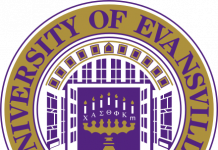The information that follows summarizes some of the current issues in the areas of estate, tax and personal and business planning which may be of interest to you. Although this information is accurate and authoritative, it is general in nature and not intended to constitute specific professional advice. For professional advice or more specific information, please contact my office.
Tax Court Upholds Family LLC. In Estate of Purdue, TCM 2015-249, the Tax Court rejected an attack by the IRS on a family limited liability company (LLC). This case involved the transfer by a decedent and her husband to an LLC of a portfolio of marketable securities with a value of more than $20 million and their one-sixth interest in commercial real estate with a value of approximately $900,000. The real estate was managed by a management company and was subject to a triple net lease. Other assets were transferred as well. The couple then established a trust and made gifts to the trust over a period of several years. The decedent’s husband had died many years earlier, and then when she died, the IRS attacked the scheme and attempted to include the assets of the LLC in the taxable estate of the deceased widow for federal estate tax purposes and also took the position that the gifts were not eligible for the gift tax exclusion. Without getting into too much depth regarding the tax concepts involved, the biggest issue concerning family limited partnerships (FLPs) and family limited liability companies (LLCs) is that the transfer may not be treated as bona fide, and the decedent’s retained interest might cause the value of the entire entity to be brought back into the estate of the decedent for federal estate tax purposes. Some FLPs and LLCs involving marketable securities have faired less favorably than entities holding other assets, which predominantly would be real estate. However, in this instance, the Tax Court upheld the transactions because the proper legal formalities were followed, the documentation prepared was consistent with the transactions, and there were legitimate non-tax reasons in addition to tax reasons for implementing the series of transactions. This case provides clear support for the use of FLPs and LLCs in family estate planning. It also provides a road map for practitioners to follow when implementing such a plan.
Leaving Retirement Benefits To A See-Through Trust. The biggest issue affecting retirement benefits being paid to a trust is whether the trust meets the IRS requirements for the minimum distribution trust rules. If so, then the benefits can be paid out over the life expectancy of the beneficiary. If it meets these requirements, the trust is referred to as a “see-through trust.†The pay-out period will be the life expectancy of the oldest trust beneficiary. In general, it is probably better to avoid paying IRAs and other retirement benefits to a trust. However, when appropriate, it is very important to assure that the trust meets the see-through requirements. The trust should not allow using the
(Continued on Reverse Side)
retirement benefits for the payment of the participant’s debts or probate expenses, unless there is no other source for payment (in which event the payments should be limited to the specific amount required to pay those expenses). There should not be a charitable beneficiary of a see-through trust. It may also be appropriate to exclude adult adoptees from the definition of “issue,†since all beneficiaries of the trust must be identifiable. Since the trustee of the trust must supply certain documentation to the plan administrator, it may be a good idea to spell out specifically what it is contemplated the trustee will do. It may also be a good idea for the trust to be a conduit trust, which means generally that the trustee is required to pay out the withdrawn minimum distributions to the specific trust beneficiaries. People should always be careful when a trust is designated as the beneficiary of retirement benefits.
Business Succession (Cont’d). The last newsletter addressed some of the preliminary basics regarding business succession planning. It may now be appropriate to address other succession planning and family concerns. Statistics show that only about 30 percent of family businesses last beyond the first generation, and only a little more than ten percent last beyond the second. Almost none survive to the fourth generation. It should be noted that there is a difference between ownership succession and management succession. Even before the business passes down to the next generation, consideration should be given to management’s withdrawal, or management’s “exit†from the management of the business, even though ownership may not change immediately. The family and other successors might become involved in the active management of the business many years before the control of the business may change. As you begin to think through and plan for these issues, it is important to consider whether there are children of family members or others who are interested in and capable of succeeding to a position of management or ownership, and to begin to help them develop the skills necessary to take an active roll. Obviously, the family is integral to this process. They must be groomed for that involvement and they must feel confident that the parent or ancestor is serious about the transfer of ownership or management control, and their vision must match that of the business owner who is beginning his or her exit from the enterprise. Consideration should be given to involving them in the management process for a period of time through participation on the board of directors or a management committee, and perhaps placing them in a limited ownership position that they can augment over time. Additional thoughts pertaining to these business succession issues will be offered in the next edition of this newsletter.
Meaning Of “Devise†And “Bequeath.†People frequently ask why the words “give,†“devise†or “bequeath†are used in wills. Under the English Common Law, real estate was the proper subject of a “devise,†and a “bequest†covered personal property. A “gift†could be made of any property. The difference between one and the other does not really matter much in modern times, but wills are still generally drafted to include that phraseology. Often a will provision referencing cash or personal property will say “I give and bequeath,†while if real property is involved, the provision might say “I give and devise.†Residuary provisions are typically phrased as “I give, devise and bequeath.â€
Additional Information. Future issues of this Newsletter will address other issues of current interest. Please contact my office with any questions that you might have.






